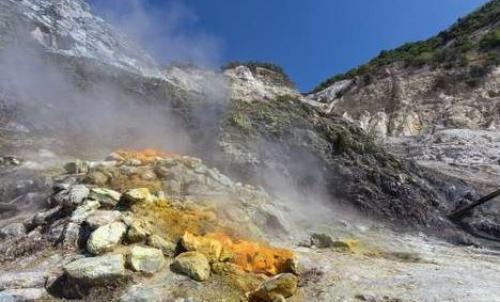Steve Bull's Blog, page 1309
September 20, 2017
The Empire’s Hustle: Why Anti-Trumpism Doesn’t Include Anti-War
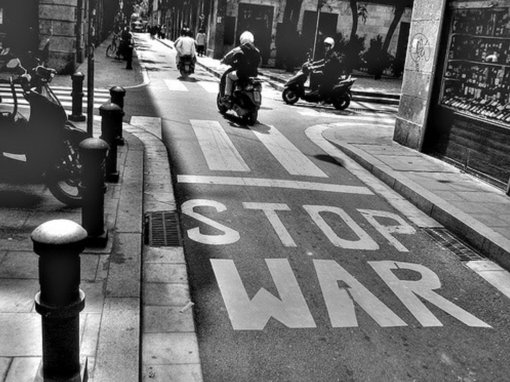
Photo by Xavi | CC BY 2.0
Libertarian U.S. Sen. Rand Paul (R-KY) declared from the Senate floor last week in anticipation of the vote on the National Defense Authorization Act (NDAA) of 2018:
“I rise today to oppose unauthorized, undeclared and unconstitutional war…What we have today is basically unlimited war, anywhere, anytime, any place upon the globe.”
With these words, Paul became one of the few voices to oppose the obscenity that is known as U.S. war policy. But only two other senators joined him: Bernie Sanders (I-VT) and Ron Wyden (D-OR). But there is a wrinkle here: Paul is not concerned with the size of the military budget. He’s pointing his finger at the continuation of the Authorization to Use Military Force Act (AUMF) of 2001, which was the “legal” basis for the U.S. global “war on terror.” He wants Congress to re-assess this legislation that has prompted endless wars abroad.
After Paul’s amendment to the NDAA was defeated, the Senate went on to approve it with a vote of 89-9 Monday in what the New York Times correctly identified as a bi-partisan effort, to authorize a military budget of $696 billion—an increase in the military budget of almost $75 billion and well over the $54 billion that Pres. Donald Trump had originally proposed.
The very next day, Trump appeared before the United Nations and threatened to destroy North Korea, subvert Venezuela, and undermine the nuclear agreement with Iran, which could lead to military conflict with that nation.
Obscuring the Bi-Partisan Defense of Empire
Nothing rehabilitates an unpopular president in capitalist “America” like war. In fact, the only sustained negative press that Barack Obama received was when he seemed reluctant to fully immerse the United States in direct efforts to cause regime change in Syria by attacking that nation and committing to significant “boots on the ground.”
…click on the above link to read the rest of the article…
Is Chinese Growth About to Falter?
The IMF revised Chinese growth forecasts higher in July – were they premature?
Retail sales, industrial output and fixed investment have slowed
The Real Estate sector is still buoyant but home price increases are moderating
Narrow money supply growth has slowed, other parts of the economy will follow
China has long been the marginal driver of demand for a wide array of commodities. In an attempt to understand the recent rise in the price of industrial metals, the strength of Chinese demand is a key factor. The picture is mixed.
The chart and commentary below is taken from Sean Corrigan’s August newsletter – Cantillon Consulting – China: Is the tide turning?:-

Source: Cantillon Consulting
As Corrigan goes on to say:-
As the deceleration has progressed, the PMI has shown its expected downward response. In due course, company revenues – and ultimately profits – will follow if this is long maintained.
Greater recourse to receivables financing (funded partly by recourse to shadow finance) can delay full recognition of this awhile, but it cannot fail to impair either the magnitude or the quality of earnings as it works through the economy.
At the heart of the credit equation lies the Real Estate market:-

Source: Cantillon Consulting
During 2016 property prices in China increased by 19%, new homes by 12.4%, the fastest since 2011, but the market has cooled of late due to government intervention to subdue its speculative excess. New-home prices, excluding government-subsidized housing, gained from the previous month in 56 of 70 cities in July, compared with 60 in June. New Home Sales for August were the weakest in three years at +3.8%, however, investment in Real Estate development increased 7.8% last month – this is hardly a collapse. House prices are still forecast to rise by 6.8% in 2017 with growth driven by continued increases in second and third tier cities:-
…click on the above link to read the rest of the article…
Federal Reserve Will Continue Cutting Economic Life Support

I remember back in mid-2013 when the Federal Reserve fielded the notion of a “taper” of quantitative easing measures. More specifically, I remember the response of mainstream economic analysts as well as the alternative economic community. I argued fervently in multiple articles that the Fed would indeed follow through with the taper, and that it made perfect sense for them to do so given that the mission of the central bank is not to protect the U.S. financial system, but to sabotage it carefully and deliberately. The general consensus was that a taper of QE was impossible and that the Fed would “never dare.” Not long after, the Fed launched its taper program.
Two years later, in 2015, I argued once again that the Fed would begin raising interest rates even though multiple mainstream and alternative sources believed that this was also impossible. Without low interest rates, stock buybacks would slowly but surely die out, and the last pillar holding together equities and the general economy (besides blind faith) would be removed. The idea that the Fed would knowingly take such an action seemed to be against their “best self interest;” and yet, not long after, they initiated the beginning of the end for artificially low interest rates.
The process that the Federal Reserve has undertaken has been a long and arduous one cloaked in disinformation. It is a process of dismantlement. Through unprecedented stimulus measures, the central bank has conjured perhaps the largest stock and bond bubbles in history, not to mention a bubble to end all bubbles in the U.S. dollar.
Stocks in particular are irrelevant in the grand scheme of our economy, but this does not stop the populace from using them as a reference point for the health of our system. This creates an environment rife with delusion, just as the open flood of cheap credit created considerable delusion before the crash of 2008.
…click on the above link to read the rest of the article…
September 19, 2017
When This Debt Bubble Bursts, Central Banks Will Turn to Money Printing… Again
Let’s face the facts.
The only reason the financial system has held together so well since 2008 is because Central Banks have created a bubble in bonds via massive QE programs and seven years of ZIRP/NIRP.
As a result of this, the entire world has gone on a debt binge issuing debt by the trillions of dollars. Today, if you looked at the world economy, you’d find it sporting a Debt to GDP ratio of over 327%.

Well guess what? The REAL situation is even worse than this. The Bank of International Settlements (the Central Banks’ Central Bank) just published a report revealing that globally the financial system has $13 trillion MORE debt hidden via junk derivatives contracts.
Global debt may be under-reported by around $13 trillion because traditional accounting practices exclude foreign exchange derivatives used to hedge international trade and foreign currency bonds, the BIS said on Sunday.
Source: Yahoo! Finance.
As has been the case for every single crisis since the mid’90s, the problem is derivatives.
Consider that as early as 1998, soon to be chairperson of the Commodity Futures Trading Commission (CFTC), Brooksley Born, approached Alan Greenspan, Bob Rubin, and Larry Summers (the three heads of economic policy) about derivatives.
Born said she thought derivatives should be reined in and regulated because they were getting too out of control. The response from Greenspan and company was that if she pushed for regulation that the market would “implode.”
Fast-forward to 2007, and once again unregulated derivatives trigger a massive crisis, this time regarding the Housing Bubble
And today, we find out that once again, derivatives are at the root of the current bubble (debt). And once again, the Central Banks will be cranking up the printing presses to paper over this mess when the stuff hits the fan.
…click on the above link to read the rest of the article…
Turkey Faces Threats for Inking Landmark Arms Deal with Russia
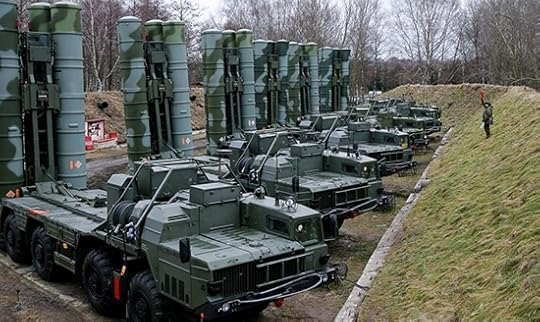
Turkey Faces Threats for Inking Landmark Arms Deal with Russia
The long awaited deal has taken place. A deposit has already been paid. Turkey has finally signed the $2.5bn (£1.9bn) contract with Russia to buy S-400 advanced missile defense system. With a range of 400 kilometers (248 miles), the system can shoot down up to 80 targets simultaneously, aiming two missiles at each one, at an altitude of up to 30 km.
The system is not operationally compatible with the systems used by NATO countries, which gives Turkey a military capacity independent of the alliance. NATO commanders will not have control over it. The identification friend or foe (IFF) equipment won’t prevent Turkey from using it against NATO aircraft and missiles. Reaching full operational capability will require Russian personnel to be stationed in Turkey on advice, assistance and training missions.
The technology transfer component of the S-400 deal is especially important as it would allow Turkey to rapidly expand domestic defense industry with Russia’s help. Russia would supply two batteries and help Ankara build two more such systems. A few years ago, the US refused to let Turkey produce Patriot air defense systems on its soil and the deal was off.
Ankara does not have industrial infrastructure to produce air defense systems. Russian specialists will have to come and build it from scratch. As a result, Russia will get access to the defense infrastructure of a NATO member state. The agreement to build the Akkuyu nuclear power plant in Turkey, which is to be launched by 2023, is another example of fruitful economic cooperation.
NATO insists members of the alliance are obligated to use military hardware that is interoperable with each other’s systems. But the S-400 deal is not the first time the principle of interoperability is not observed. Greece purchased Russia’s S-300 missile system several years ago.
…click on the above link to read the rest of the article…
Scientists Say Italian Supervolcano Is “Becoming More Dangerous” As Magma Builds Beneath It
After the long-dormant supervolcano Campi Flegrei awakened late last year, a team of scientists that has pinpointed the now-active volcano’s magma source says a potentially devastating eruption could be just around the corner.
Campi Flegrei is a volcanic caldera to the west of Naples that last erupted in the sixteenth century. It has been mostly quiet since then, with the exception of a few small tremors in the 1980s. Seismographic data from those rumbles allowed scientists to pinpoint the source of the magma that flooded into Campi Flegrei’s chamber and caldera, according to United Press International. The results are unequivocal: An analysis of the supervolcano’s hot zone suggests Campi Flegrei could be nearing an eruption.
“What this means in terms of the scale of any future eruption we cannot say, but there is no doubt that the volcano is becoming more dangerous,” De Siena said.
“The big question we have to answer now is if it is a big layer of magma that is rising to the surface, or something less worrying which could find its way to the surface out at sea.”
Researchers liken the volcano’s hot zone to a boiling pot of soup. Over the last several years, the volcano has gotten considerably hotter.
The Campi Flegrei “hot zone”
Four years ago, scientists warned any eruption could kill millions living near or on top of the volcano.
“These areas can give rise to the only eruptions that can have global catastrophic effects comparable to major meteorite impacts,” said Giuseppe De Natale, head of a project to monitor the volcano’s activity.
…click on the above link to read the rest of the article…
Check Dams and the Promise of Renewing Groundwater Springs

CHECK DAMS AND THE PROMISE OF RENEWING GROUNDWATER SPRINGS
When my family and I moved onto our farm a couple of years ago, the small creek that ran through the bottom part of our land had been essentially abandoned for several decades. While we could hear the creek, it was all but impossible to make our way down to where the water actually ran due to a mess of vines, thorns, and thick underbrush. An invasive vine (similar to kudzu) had choked out some of the cedar saplings that somehow had managed to take root in that mess of brush.
When the dry season finally came around, we were able to machete our way down to the creek and see firsthand the steady flow of water that we hoped to one day use for our domestic water supply. The dry season here in Central America, however, lasts at least half the year. In March (nearing the end of the dry season), our small creek had slowed to a trickle, and by April there was nothing but murky soil along the creek bed. Once the rains began again in May, the creek reappeared, but we realized that we would be left with several months of water shortage each year.
AN EXPERIMENT WITH CHECK DAMS
A couple weeks of intense machete hacking that dry season allowed us to plant several hundred cedar saplings along the creek´s edge. While our reforestation effort would hopefully contribute to protecting and maybe even strengthening the small creek, we knew it would take years to see any sort of progress towards a developing forest ecosystem.
…click on the above link to read the rest of the article…
Freedom Is a Myth: We Are All Prisoners of the Police State’s Panopticon Village
“We’re run by the Pentagon, we’re run by Madison Avenue, we’re run by television, and as long as we accept those things and don’t revolt we’ll have to go along with the stream to the eventual avalanche…. As long as we go out and buy stuff, we’re at their mercy… We all live in a little Village. Your Village may be different from other people’s Villages, but we are all prisoners.”— Patrick McGoohan
First broadcast in Great Britain 50 years ago, The Prisoner—a dystopian television series described as “James Bond meets George Orwell filtered through Franz Kafka”—confronted societal themes that are still relevant today: the rise of a police state, the freedom of the individual, round-the-clock surveillance, the corruption of government, totalitarianism, weaponization, group think, mass marketing, and the tendency of humankind to meekly accept their lot in life as a prisoner in a prison of their own making.
Perhaps the best visual debate ever on individuality and freedom, The Prisoner (17 episodes in all) centers around a British secret agent who abruptly resigns only to find himself imprisoned, monitored by militarized drones, and interrogated in a mysterious, self-contained, cosmopolitan, seemingly tranquil retirement community known only as the Village. The Village is an idyllic setting with parks and green fields, recreational activities and even a butler.
While luxurious and resort-like, the Village is a virtual prison disguised as a seaside paradise: its inhabitants have no true freedom, they cannot leave the Village, they are under constant surveillance, their movements are tracked by surveillance drones, and they are stripped of their individuality and identified only by numbers.
The series’ protagonist, played by Patrick McGoohan, is Number Six.
Number Two, the Village administrator, acts as an agent for the unseen and all-powerful Number One, whose identity is not revealed until the final episode.
…click on the above link to read the rest of the article…
IEA: Price Spike Coming In 2020
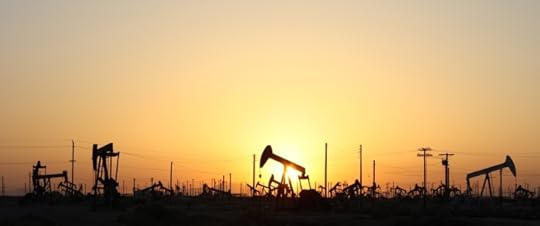
The oil market has been awash in crude for more than three years, and OPEC has struggled to accelerate the rebalancing effort, but the world could be heading for a supply crunch in a few years due to the sharp fall in industry spending.
The halving of oil prices from $100 per barrel before 2014 down to just $50 today has led to a corresponding plunge in upstream investment. But even as benchmark prices seem to have stabilized over the past year, with most analysts predicting gradual and modest gains in the year ahead (depending on OPEC’s actions), there’s still no sign of a serious rebound in spending levels.
The problem of a shortage of supply seems very far off today, given the swift turnaround in U.S. shale and persistently high levels of crude storage.
But demand continues to rise—the IEA just upgraded its demand growth estimate for 2017 to 1.6 million barrels per day (mb/d). If that level of demand growth continues for a few years, it will more than devour the excess supply on the market. Even a more tempered growth rate would strain supplies toward the end of the decade, absent a corresponding uptick in production.
“There are still not enough signs of investment beginning to return, and that raises the risk of tightening of the market in the next five years and a risk to the stability of oil prices,” Neil Atkinson, head of the IEA’s oil markets and industry division, said at a conference in Bahrain. “There is at least a possibility of going back to the situation we had 10 years ago where oil prices were very, very high at a time when demand was growing.”
…click on the above link to read the rest of the article…
What Is Real Wealth?
As for acquiring capital–the most important types of capital don’t require much money.
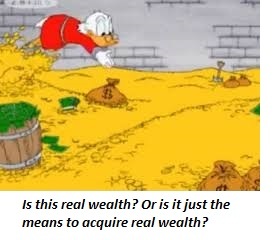
What is real wealth? Money, right? Currency, gold, quatloos, you name it.Money is real wealth because you can use it to buy whatever you want.
I would argue money in any form is only the means to acquire real wealth, which is the agency, opportunity and time to pursue your life’s work.
The conventional view that wealth is money and leisure has it all wrong. Let’s imagine the owner of a vault of conventional treasure: jewels, gold coins, etc.
If the “wealth” stays in the vault, what’s the point of owning this “wealth”? The secret satisfaction of being “wealthy”?
If “wealth” is only an internal state, then let’s measure friendship and being needed/wanted as the metrics of “wealth.” You see the point; if “wealth” is merely an internal state of satisfaction, then a vault full of “money” is a poor metric.
What money buys that is real wealth is freedom and control of one’s life. This control over one’s life is called agency. Agency is defined as “the capacity of an actor to act in a given environment.” This may not seem like a profound concept, but another way to describe agency is that agency is the opposite of powerlessness.
People with agency define themselves and their identity; they shape the world they inhabit rather than passively await whatever circumstances deliver up.
In the real world, people with agency move on when things no longer work for them in a particular situation. Agency is not just the opposite of feeling powerless; it’s also the opposite of victimhood, i.e. the state of being in which others are held responsible for all of one’s travails and difficulties.
Agency and responsibility are two sides of the same coin: each manifests the other.
…click on the above link to read the rest of the article…

